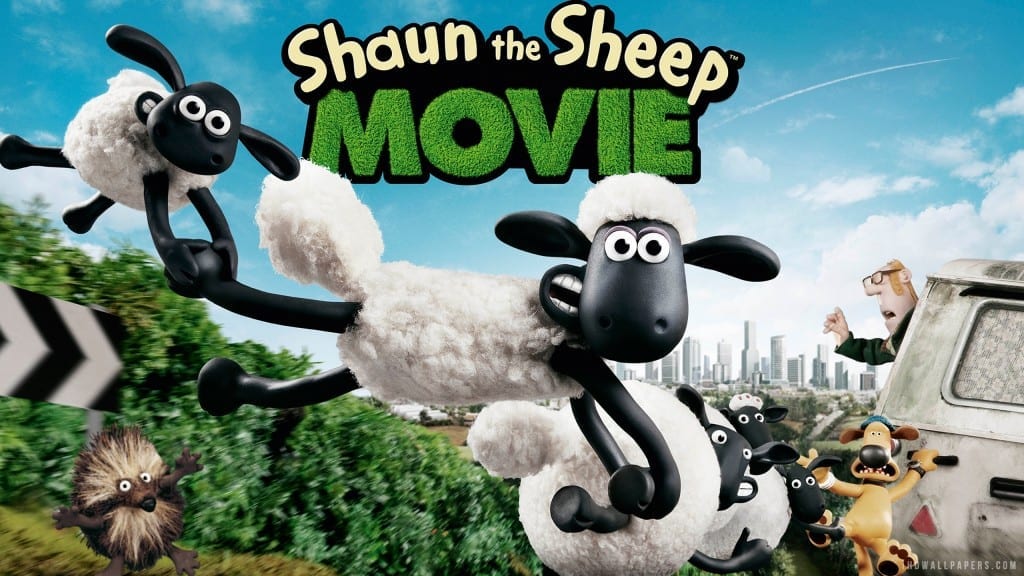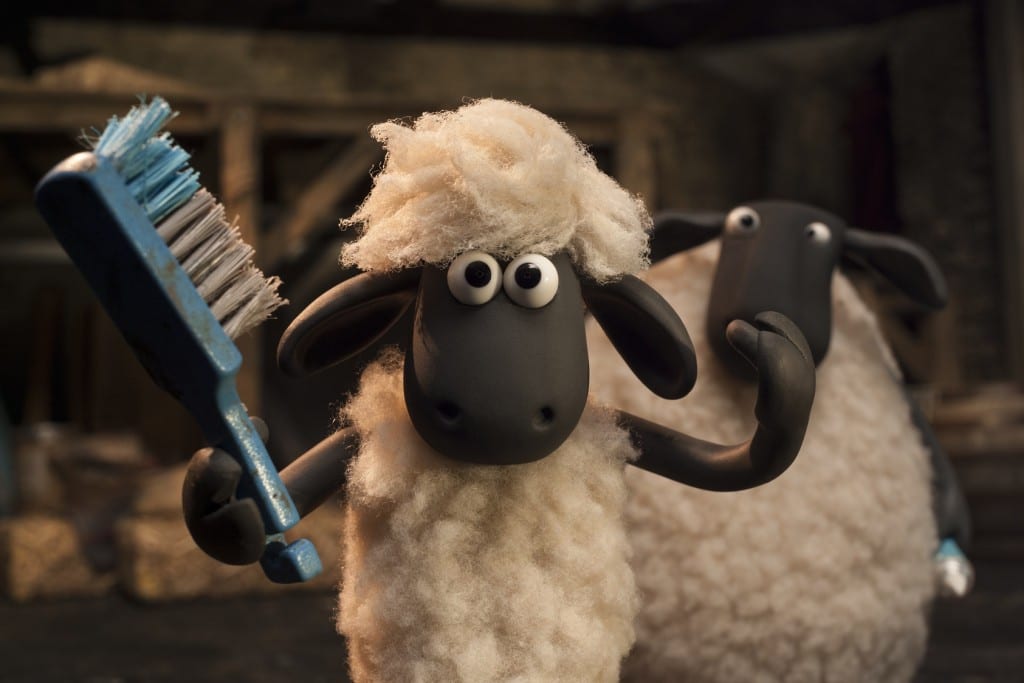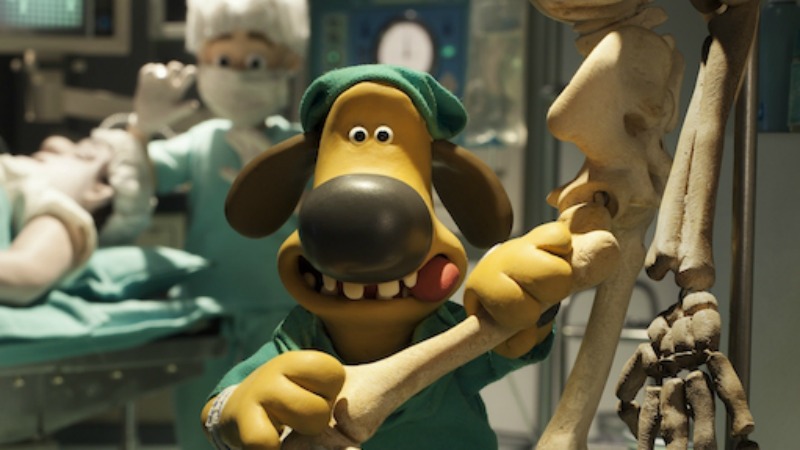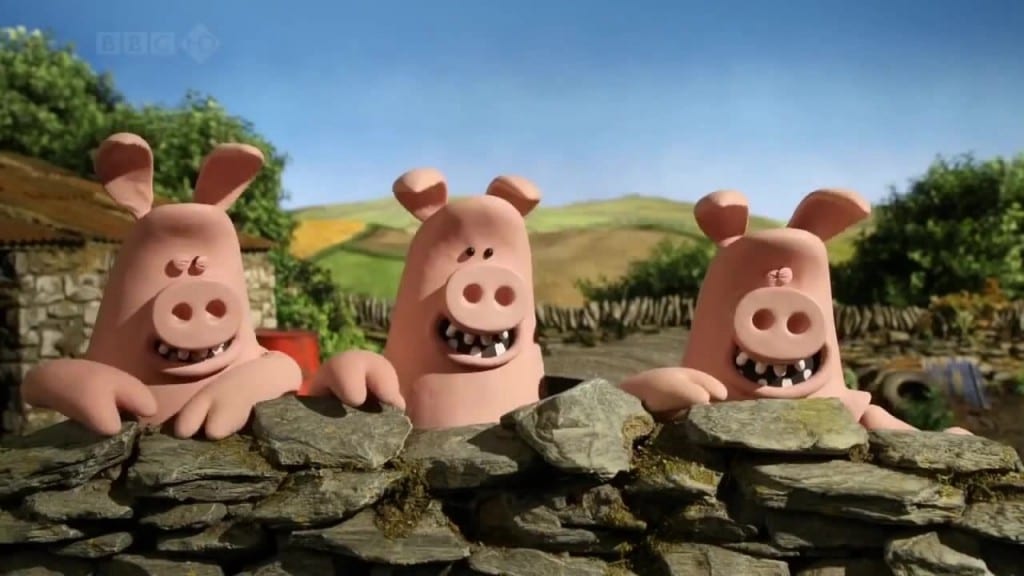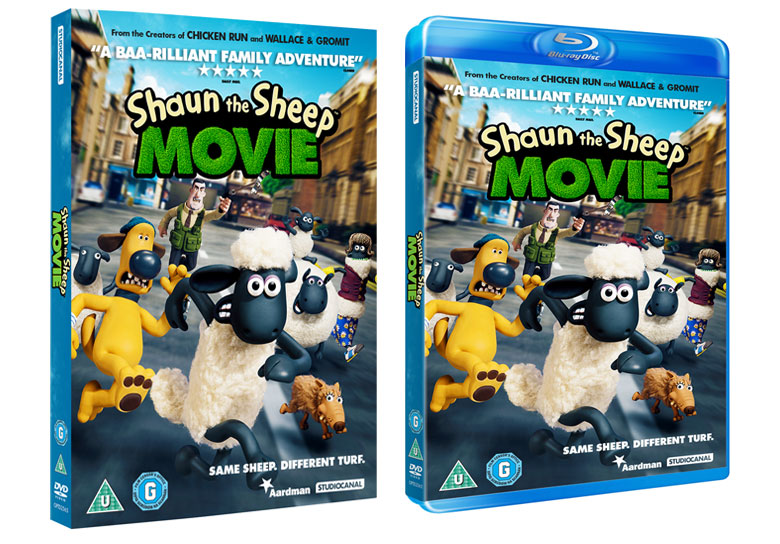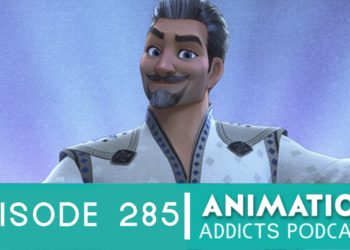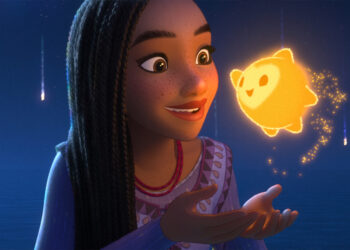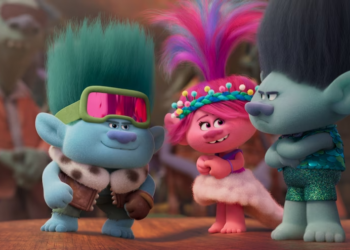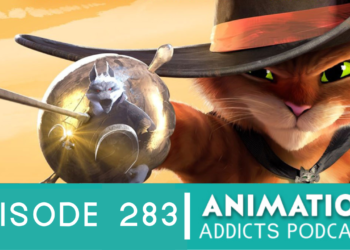Aardman’s Shaun the Sheep Movie will soon be available on Digital HD on November 10 and the DVD and Blu-ray will be released on November 24. I had the pleasure of talking with the movie’s writer and co-director Richard Starzak and producer Paul Kewley to discuss the making of this highly enjoyable movie.
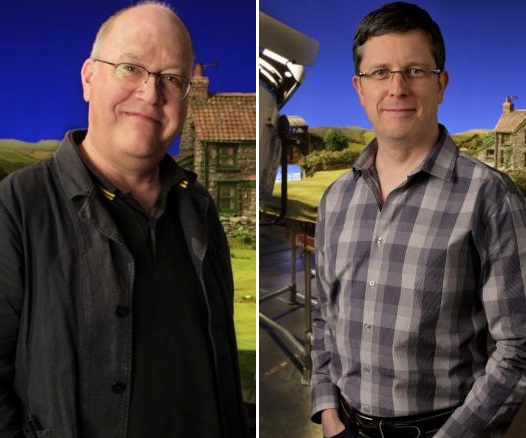
MJ: What I love about the television series the most is the appeal of the characters. There’s no doubt that Shaun has charisma and he can carry a movie. So when did you decide he was ready for the big screen?
Richard: Funnily enough, quite early on. I think even when we were making the first series. There’s an episode called “Save the Tree.” This had a very cinematic three act structure. A sort of mini-movie. I thought early on that there’s quite a lot of scope. Not just Shaun but quite a lot of the characters can carry a movie. So very early on I was keen, but I started making noises about it five, maybe six, years ago. Just muttering ‘Shaun the Movie’ in people’s ear.
Paul: He did. He just wandered around the building saying it to anyone who would listen really. It’s very true. Richard was always convinced there was a movie in the property and in Shaun the series. You know, obviously, from my perspective initially I was quite a little bit nervous. How can I carry this off? But he was right.
MJ: He is a very iconic character, not just to Aardman but to Britain now too, so did you feel the pressure of “this movie has to be good”?
R: Yeah, very much. But you kind of need that pressure to make it, I think. You need a bit of fear for a project like that and I was a bit scared at first. The idea of making a film at all is very difficult and a film with no dialogue is doubly difficult.
MJ: I do think the nonverbal is very good for international release. You don’t need to do any dubs or anything.
R: That is true, yes. Funnily enough the idea for not having any dialogue was a labor saving device for the series. It would be more conceivable to make a series without dialogue because lip sync takes time and money.
MJ: Of course. I wanted to talk about that because, obviously, a movie like this takes a long time to make. And so when it’s finally released how does it feel when the world finally gets to see what you’ve been working on for so long?
R: You know strangely it’s not a very pleasant experience [laughs]. You work on something so hard and I have to say the process of making the film I actually loved. The process of making the film was probably the best thing I’ve ever done. And then suddenly you’re on the last day of the final mix in a studio in London, and you’re doing those last little tweaks to the sound effects here and there, and suddenly it’s over. It’s a bit of a downer, I have to say. But it was a thrill when it came out months later and you start to see people’s reaction to the film. It’s fantastic.
P: I agree. The other thing is there’s a slight terror as well about showing the world what you’ve done. Waiting to see what people say. When my wife first saw the movie I was terrified. I was quite nervous about what she’d think of it. But I think that’s part of film making to be honest. Any time you make anything the truth is at some stage you’ve got to let the thing go. You have to see how it works in the world and either be pleasantly surprised or hide away in shame.
MJ: Luckily, with Shaun, you can be pleasantly surprised.
P: We were very much.
MJ: Is it true there weren’t many animators working on the movie?
R: It was quite a small team. I think we had sixteen working on it most of the time and it went up to twenty if we felt the pressure a little bit. So, yes, it is a relatively small crew.
MJ: Does that work to your advantage at all? You can oversee pretty much everyone and what they’re doing at the same time?
R: Yeah, absolutely. It makes a massive difference. I think on Pirates! [Band of Misfits] the crew was twice the size and spread over a much bigger area. And to keep the story in your head and to go from set to set – there were twice as many units I think as well.
P: There was, yeah.
R: I think I found it difficult enough with sixteen to twenty units to walk around and to sort of contain the whole story in my head and brief the animators and the cameras and everyone else was difficult. But actually it was a lot simpler with other productions I’ve worked on.
MJ: Were there any particular moments or scenes you were fond of as you were working on it?
R: You know actually one of my favorites is the idea of a dog nearly operating on a human. When we discussed that it seems like quite a gross idea because we hadn’t storyboarded it yet. I showed Mark [Burton, co-director] a cartoon of this operating theater where they’re working on somebody and they’ve removed some of the innards and chucking it and the dog’s leaping up and grabbing it out of the air. But we don’t have to do all that. We can imply that a dog is going to stick a knife into a human being. Even though it’s quite dark it’s a very funny idea as well.
MJ: That is one of the best moments. I was in hysterics. So when you’re making it, because of scenes like that, do you have to keep in mind that it’s for children or is it for everyone?
R: I think we’ve always approached the animation we do at Aardman with making comedy that’s universal rather than for children or for adults. Or some jokes for children, some for adults. We try to have humor that’s pretty universal. It works globally as well and for different generations.
P: I agree. One of the things we do a lot is sit around and try to make each other laugh while coming up with ideas. You end up having these very serious conversations about what’s funny and what’s not. We did take it incredibly serious at times.
R: For all intents and purposes we were making Apocalypse Now.
P: One of the arguments for me was,”‘which was better, a burp or a fart gag?”
MJ: And which was the winner?
P: We ended up agreeing they’re both good.
MJ: I mostly cover stop-motion for The Rotoscopers and I love that this feature movie is, not only stop-motion, but claymation too. How do you feel about keeping this particular art form going?
R: Very much so. I have to say there are now only a small element of the puppets that are clay. Mostly with the face, the eyelids and the eyebrows. Bitzer’s head is all clay for instance and the pigs are all clay. It is very time consuming, as much as we love it. So we’ve kind of minimized it and used it. I like the subtly that you can get from clay, the very small changes like the height of the eyelid or the curl of the lip, and you can almost see the human hand doing it as well. That’s something I particularly like.
MJ: Absolutely. There’s something very inviting about it and you can tell it’s a labor of love. You sense that when you’re watching stop-motion and particularly when you’re watching any Aardman feature as well.
P: I agree. I’m a relative newcomer to Aardman and I’ve always loved what they did. Because, it’s true, it kind of comes out on screen. Everybody who is involved in the process just loves what they’re doing. The whole team are very passionate about what they do. It’s great to be involved in something from conception to the end to see that in action.
MJ: Absolutely. And for my last questions, can you tell us what’s next for Shaun? Is it true there’s a sequel in the works?
R: Yes, that’s exactly what we’re working on at the moment. We have to top what we’ve done. So we wanted to find an idea that was completely different and unexpected and I think we’ve found it. We are very excited now about working on the sequel.
P: We’ve also made a half hour episode called “The Farmer’s Llamas.” It’s getting a release in the US too.
Broadcast dates for “The Farmer’s Llamas” will be confirmed soon – check back on the Shaun the Sheep website and Facebook for the latest Llama updates.
Shaun the Sheep Movie is released on DVD and Blu-ray November 24. You can pre-order your copy from Amazon here!
You can also check out the Rotoscopers podcast review of the movie here!
What do you think of the Shaun the Sheep Movie? Are you looking forward to his next adventures?
Edited by: Hannah Wilkes


![[INTERVIEW] Director Richard Starzak and Producer Paul Kewley for ‘Shaun the Sheep Movie’](https://www.rotoscopers.com/wp-content/uploads/2015/11/LbiW5.jpg)
